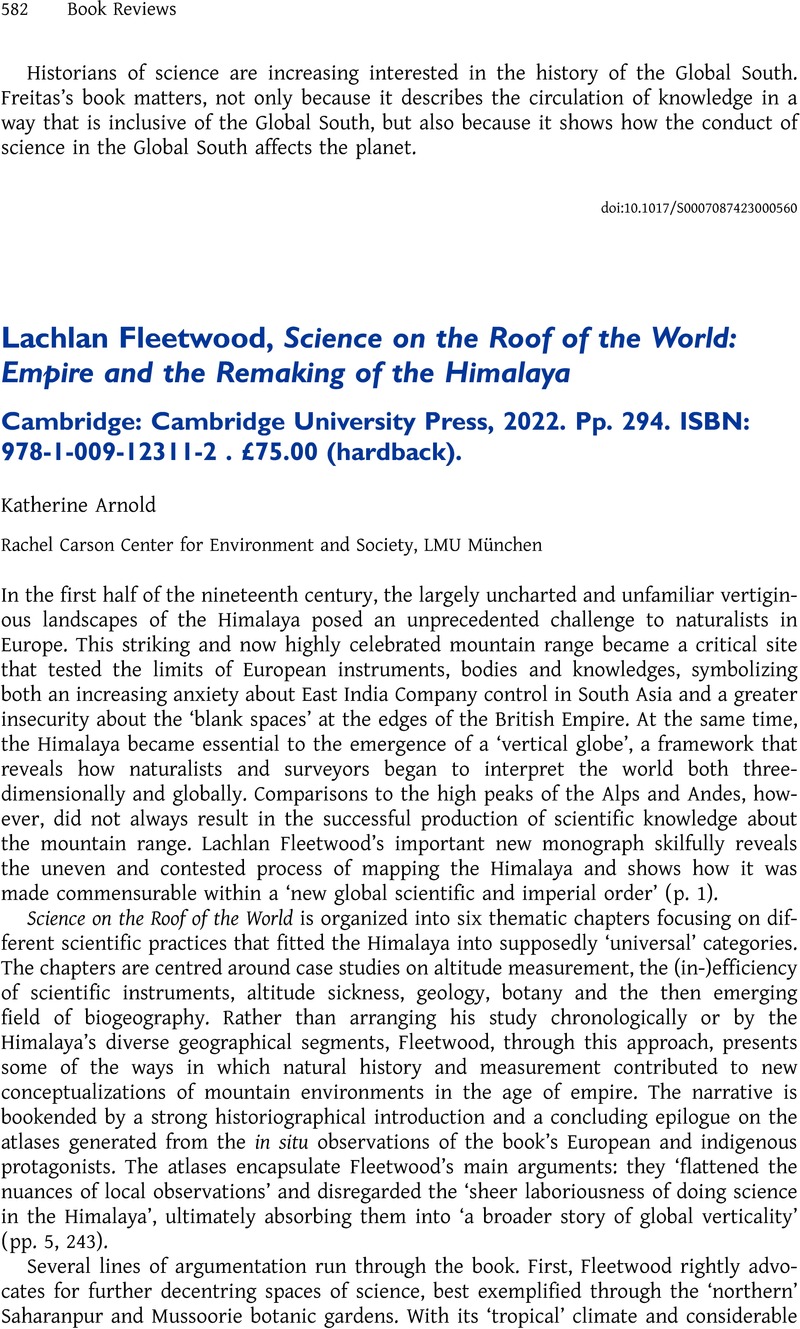No CrossRef data available.
Article contents
Lachlan Fleetwood, Science on the Roof of the World: Empire and the Remaking of the Himalaya Cambridge: Cambridge University Press, 2022. Pp. 294. ISBN: 978-1-009-12311-2. £75.00 (hardback).
Review products
Lachlan Fleetwood, Science on the Roof of the World: Empire and the Remaking of the Himalaya Cambridge: Cambridge University Press, 2022. Pp. 294. ISBN: 978-1-009-12311-2. £75.00 (hardback).
Published online by Cambridge University Press: 31 October 2023
Abstract
An abstract is not available for this content so a preview has been provided. Please use the Get access link above for information on how to access this content.

- Type
- Book Review
- Information
- The British Journal for the History of Science , Volume 56 , Special Issue 4: The Art of Gathering: Histories of International Scientific Conferences , December 2023 , pp. 582 - 583
- Copyright
- Copyright © The Author(s), 2023. Published by Cambridge University Press on behalf of British Society for the History of Science



